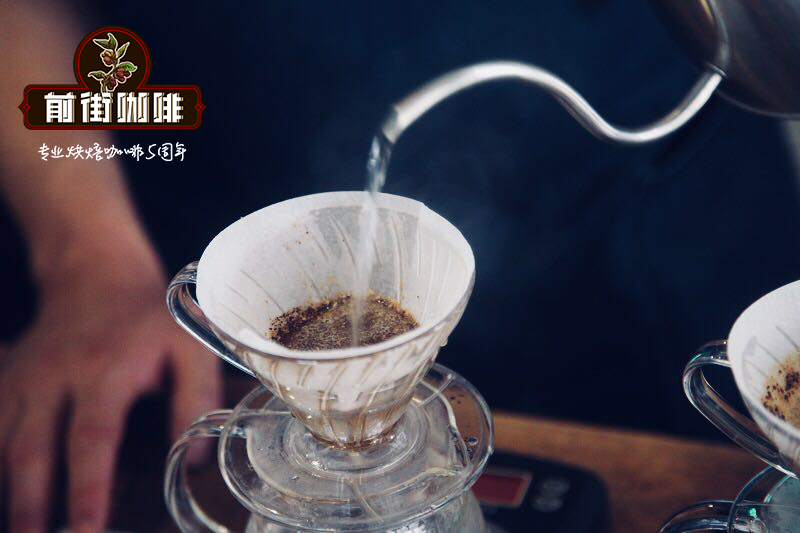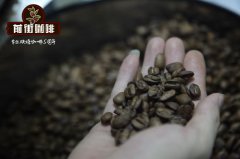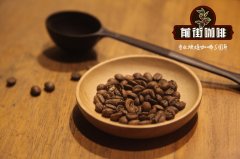The principle of hand-brewing coffee recommends the brewing method.

Professional coffee knowledge exchange more coffee bean information please follow the coffee workshop (Wechat official account cafe_style)
People who are just beginning to know hand-brewed coffee are often frightened by a dazzling array of utensils and precautions, and they don't know where to start with kettles and filter cups. In fact, different hand brewing conditions have their own advantages and disadvantages, and everyone's preferences are also different. rather than comparing the different opinions of various experts everywhere, we suggest that you understand the principle of hand-brewing coffee in order to really know how to brew a cup of coffee that suits your taste. The principle of making coffee by hand
The so-called brewing coffee is actually the process of extracting the molecules from the coffee cells, and this process includes the following three steps: wetting, dissolution, and release, which occur one after another and interact with each other, and finally produce the special flavor of coffee. We will explain the following one by one:
Step 1: get wet
Literally, coffee powder gets wet when it touches water, which is the starting point when coffee cells begin to release molecules.
It should be noted that roasted coffee beans are filled with carbon dioxide, and the fresher the beans, the more carbon dioxide they contain. When the hot water touches the coffee powder, the carbon dioxide will run out first, forming a layer of air bubbles on the surface, and you will see the coffee powder in the filter cup begin to expand (pictured below). At this time, the coffee cell is like a supermarket that a lot of people have to squeeze out of the inside, and people outside can't get in at all-in the same way, hot water outside the cell can't get into the cell. Therefore, after wetting the coffee powder, we will stop injecting water and wait for the complete release of carbon dioxide and the coffee powder to stop expanding and then continue to heat the water in order to achieve a better extraction effect.
When the hot water touches the coffee powder, carbon dioxide will run out first, forming a layer of air bubbles on the surface.
Step 2: dissolve
Refers to the process of dissolving soluble molecules in coffee cells in hot water, which is the most important step in deciding to extract the flavor of coffee.
Coffee beans 2/3 are made up of insoluble cellulose and 1/3 are soluble odor molecules that are dissolved in order according to the size of the molecules when they come into contact with water. The first small molecules dissolved include acidity and aroma, then the sweetness of middle molecules, and finally the bitter taste of macromolecules, which is where the different levels of coffee taste come from. Therefore, if you like the sweeter taste, the extraction time should be shorter, because the longer the hot water stays on the coffee powder, the more bitter molecules will be dissolved.
Step 3: diffusion
After the odor molecules dissolve, they leave the coffee cells by osmosis, a process called diffusion. After the odor molecules are diffused into hot water, the final coffee extract is formed.
Coffee extraction
Factors affecting hand-brewed coffee
Once you understand the principle, you should be able to understand the effect of different hand-brewing conditions on the flavor of coffee. All the different factors actually revolve around one core: extraction time, that is, the time when coffee powder reacts with hot water. We have sorted out some important factors below:
Uniformity of coffee powder particles: the extraction speed of fine coffee powder is fast, while that of coarse coffee powder is slow, and the complete extraction time is different. If the powder particles are not uniform, it is possible that the fine coffee powder has begun to release bitter molecules, and the coarse coffee powder has not been extracted completely, resulting in a poor flavor of the final coffee. If the coffee powder is evenly granulated, there will be no such problem.
Coffee powder particle size: the finer the coffee powder, the longer the hot water will flow through the coffee powder.
Filter paper thickness: the thicker the filter paper, the slower the flow rate of the extract, and the longer the interaction between hot water and coffee powder.
Water injection speed and method: water injection is uniform and stable, so that the extraction speed of coffee powder is the same. In addition, the height of water injection will also affect the water temperature, so it is recommended to get as close to the filter cup as possible and inject water by repeated loops. (photo source: reddit)
Water temperature: the higher the water temperature, the faster the extraction speed. It is generally recommended that the deep-roasted coffee beans should be boiled at 90 degrees 80muri, while the lightly roasted coffee beans should be boiled at 90Mui 97 degrees.
Most of these factors are not standard, because everyone likes the taste of coffee is different, how to adjust different factors, rush out their favorite taste, is the most interesting part of hand-brewed coffee. For example, if you want to drink bitter coffee, you can use finer coffee powder, higher water temperature, or longer water injection time to achieve the desired taste.
After knowing the background, the next step is to implement it. Here are the detailed steps and precautions for making coffee by hand:
Ground coffee beans: the standard particle size is like No. 2 sugar, can be adjusted, the key point is to uniform particles, you can use a sieve to sift out the ultra-fine powder to avoid being unable to filter. The amount of coffee powder is about half to 2/3 of the filter cup, too little can not control the flow rate of hot water, too much will be full when flushing.
Boiled water: the standard ratio of powder to water is about 1:16, which can also be adjusted according to personal preference. The suitable water temperature is about 90 degrees, which can be measured with a thermometer after boiling.
Preheating: fold the filter paper so that it is flat on the filter cup, soak the filter paper with some hot water and preheat the filter cup, which can also eliminate the smell of the filter paper. Pour out the water after preheating.
Powder: pour the coffee powder into the filter cup and pat the side of the filter cup to make the coffee powder surface slightly flat.
Start timing, first water injection: put the spout near the edge of the filter cup, start injecting water from the center of the filter cup, go around the center to the periphery and then back to the center, soak all the coffee powder and then stop, be careful not to have too much water. At this time, the surface of the coffee powder will produce white bubbles and begin to expand.
Steaming: wait for the coffee powder to stop expanding for about 30 Murray 40 seconds, by which time some extract may have begun to filter out.
Second water injection: when you see the foam begin to collapse, start the second water injection, just like repeat the circle from the center and continue to inject water evenly. This water injection process takes more than 2 minutes, depending on the expected cooking time (it is generally recommended that deep-roasted coffee beans range from 2 to 2 and a half minutes and shallow roasted coffee beans for 2 and a half minutes to 3 minutes).
Rest: after stopping filling, wait for 20-60 seconds to filter, and then pour the coffee into the coffee cup.
Hand-brewed coffee is a simultaneous process of flavor extraction and filtration, and the extraction takes place at the center of pouring water. The key lies in how to control and balance the extraction amount of various components in roasted beans to prepare coffee.
Like the pursuit of flavor, choose the traditional filter cup V60, like the shape to buy some strange appearance of the filter cup, but it does not mean that the strange shape of the filter cup brewed coffee is not as good as the traditional filter cup. V60 this filter cup, playability is very good, variability is also elusive, once you control V60, other filter cup, no matter!
Cooking steps
1. Weigh 15g coffee beans. Pour into the grinding bean equipment grinding, the grinding size is usually selected according to the baking degree, the hand impact grinding particle size is usually thicker than Swire fine granulated sugar bar (Xiaobian accustomed to small Fuji 3.5)
2. Fold the filter paper into the filter cup, use the hot water in the hand pot to wet the filter paper in a clockwise circle to remove the smell of the filter paper, stick to the filter cup and the hot water will flow into the pot at the same time, which can warm the pot and make the coffee more delicious. 3. Pour the water from the coffee pot, pour 15 grams of coffee powder into the middle of the filter paper, shake the filter cup horizontally, so that the coffee powder in the filter paper can be paved. 4. Put the upper seat of the flat powder back on the filter cup, then use the hot water in the hand flushing pot to draw a circle around the center of the filter cup 5, usually start the time at the end of the first stew, quickly brew the coffee to 30g, and then stop injecting water. When steaming to 25-30 seconds, the second injection.
Water injection should be steady! (don't cut off the water, you can practice more at home.)
6. draw a circle in the same way as before in the second water injection, draw a circle clockwise in the middle of the filter cup, and then you will choose thin water to inject water slowly.
V60 be careful not to rush to the place where the coffee powder is connected to the filter paper, so as to avoid the channel effect (which means that the water flows directly from the side groove to the pot without passing through the coffee powder).
When the coffee powder rushes to the outermost ring, leave a circle, and then make a circle to the middle.
In the third water injection, a larger water column is used to make use of the impact of the large water flow, which makes the coffee powder increase the coffee particles to tumble, let the deposited particles all tumble, and then dissolve the soluble matter.
7, 2 minutes-2 minutes 30 seconds, to pour coffee to 225g, how to drink coffee healthily, make coffee by hand.
The above is the basic process of making hand-brewed coffee, which actually seems quite easy.
Important Notice :
前街咖啡 FrontStreet Coffee has moved to new addredd:
FrontStreet Coffee Address: 315,Donghua East Road,GuangZhou
Tel:020 38364473
- Prev

The characteristics of Brazilian coffee beans what is the roasting degree of Brazilian coffee beans? Brazilian coffee bean treatment
Professional coffee knowledge exchange more coffee bean information please follow the coffee workshop (Wechat official account cafe_style) Brazilian coffee characteristics of Brazilian coffee generally refers to the coffee produced in Brazil. There is a wide variety of Brazilian coffee, the vast majority of which are unwashed and sun-dried, classified according to the name of the state of origin and the port of transport. Brazil has 27 states and 17 states produce coffee, but its
- Next

Direct auction of 25 cups of coffee from COE (Excellence Cup), birthplace of Pacamara, El Salvador
For more information on coffee beans, please follow the coffee workshop (Wechat official account cafe_style) J. Raul Rivera of Santa Rosa Farm won the Salvador Award of Excellence (COE) in 2019 for a score of 90.57 for his honey-processed Pacamara variety. The 16th competition will be held in San Salvador from April 23 to 26. For Australia, Billy.
Related
- Detailed explanation of Jadeite planting Land in Panamanian Jadeite Manor introduction to the grading system of Jadeite competitive bidding, Red bid, Green bid and Rose Summer
- Story of Coffee planting in Brenka region of Costa Rica Stonehenge Manor anaerobic heavy honey treatment of flavor mouth
- What's on the barrel of Blue Mountain Coffee beans?
- Can American coffee also pull flowers? How to use hot American style to pull out a good-looking pattern?
- Can you make a cold extract with coffee beans? What is the right proportion for cold-extracted coffee formula?
- Indonesian PWN Gold Mandrine Coffee Origin Features Flavor How to Chong? Mandolin coffee is American.
- A brief introduction to the flavor characteristics of Brazilian yellow bourbon coffee beans
- What is the effect of different water quality on the flavor of cold-extracted coffee? What kind of water is best for brewing coffee?
- Why do you think of Rose Summer whenever you mention Panamanian coffee?
- Introduction to the characteristics of authentic blue mountain coffee bean producing areas? What is the CIB Coffee Authority in Jamaica?

